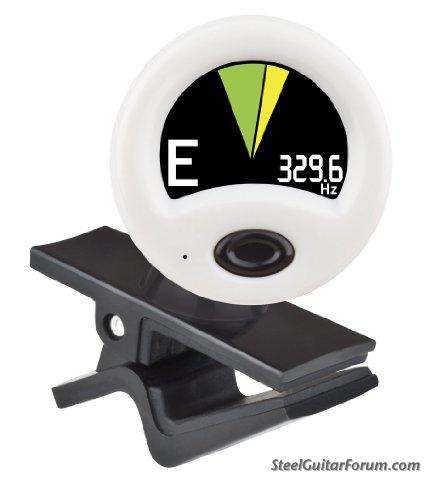I have always used the “old” Jeff Newman just intonation settings with E straight-up at the “440” (zero) mark.
Several years ago, Larry Bell (an excellent player and an engineer) described on the SGF what I believe to be the most logical way to tune one’s pedal steel to accommodate the “cabinet drop” that occurs when the A & B pedals are engaged.
Basically Larry recommends tuning the E9 fourth and eighth strings (the Es) to "440" with the A & B pedals engaged. Then release the A & B pedals, and check your 4th string. Whatever the offset from “440” the E string reads with the pedals disengaged, tune your B string with the same degree of offset.
For example, my guitar has little cabinet drop, so the E (with no pedals engaged) usually shows up at about 1.5 Hz higher than "440" (“441.5”), so I tune my B strings to “441.5”.
As Pythagoras discovered 2,500 years ago, the purest musical relationship is between the root tone and the fifth tone.
The result of Larry’s method is that when the A & B pedals are engaged, the E note (the fifth scale-tone in A) is at 440, and when the A & B pedals are disengaged, the E note is in tune with the B note (the fifth scale-tone in E) at 1.5 Hz high (441.5).
Very logical, very simple, and the guitar is in perfect tune.

For a more detailed explanation:
http://www.larrybell.org/id29.htm
- Dave
Edited to correct "cents" to "Hz".
